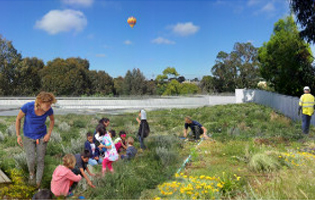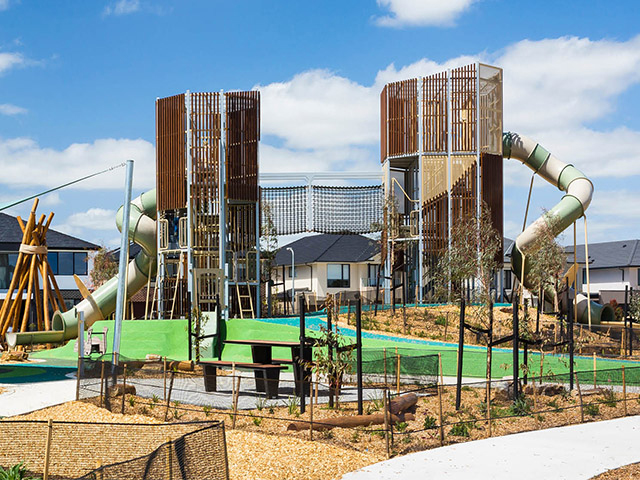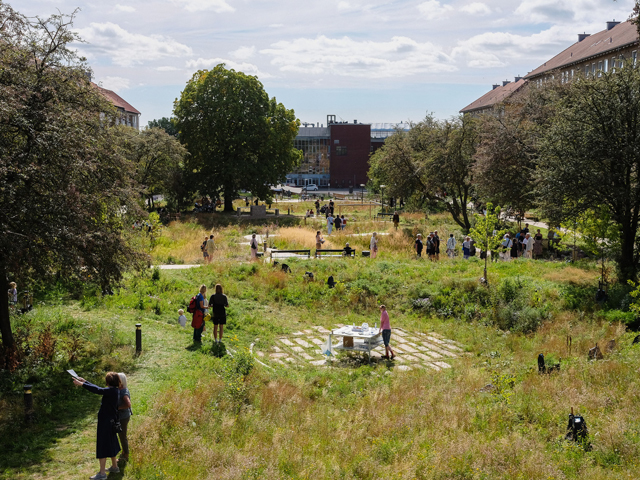GREEN ROOFS A SOLUTION TO STORM WATER RUNOFF
01 Jul 2015
With ever increasing urbanisation, Australian cities are producing huge amounts of storm water runoff. Installing a green roof can manage storm water without taking up valuable developable areas.

With the construction of more roads and infill development in Australian cities, the huge amounts of storm water runoff being produced is an ever increasing problem. This water accumulates in the city drainage systems which are often operating beyond capacity, causing flooding and environmental hazards. When the runoff eventually enters the receiving waters, it is contaminated, resulting in ecological degradation and threats to human health.


Local governments and water authorities in most Australian cities require that new developments manage storm water in some way. This may be by restricting runoff to pre-development flows or by treating storm water onsite.
Onsite treatment can be expensive, particularly in dense developments or on constrained infill sites, and the costs of ‘offsetting’ storm water management offsite can be even greater. In many instances the area required to manage storm water effectively onsite is significant, which can limit the return on developable land.
Rather than paying the offset contribution or building on-ground elements that take up developable space, another way of dealing with this problem and saving money is to include green roofs as a part of the development.
Installing a green roof, or a roof that includes soil and vegetation on top of a building, will reduce storm water runoff and remove contaminants that developers and water authorities spend millions of dollars a year to remove. It will also provide amenity and other financial benefits that include energy savings and protection from fire.
A green roof acts like a sponge to slow and reduce the volume of storm water runoff, which means that rain water does not immediately surge into the storm water system, but is held up on the roof garden, slowly trickling down. This water sustains the growth of plants which further take up water into their roots, stems and foliage.
The water retention function of green roofs is well known, but what is less well known is exactly how much water is held, and the quality (or lack of contaminants) of the water that does flow through after it passes through the roof garden.
Recently the Victorian Government commissioned a project to quantify the volumetric and qualitative improvements that a green roof can provide to the urban water cycle.
The proponent of this green roof project - Henrik Ender of the Big Bang Creative Community Hub - believes that a green roof as part of their retro fit of an inner urban warehouse will convert it to a ‘living laboratory’ and demonstrate that there are multiple benefits of ‘living architecture.’
In Ender’s opinion, “not only is the green roof a pivotal component of the creation of this space – it could be the magnet that will invigorate our business and draw attention to our core beliefs which are sustainability in all of its forms be it ecological, urban and social.”
As well as having a potential roof garden, this project includes a vertical garden in the form of Living Louvres that visually connect the building to the adjacent Merri Creek and CERES Environmental Park opposite.
Dr Robyn Overall from Ecoharvest was the environmental scientist who conceived of the Big Bang green roof water quality improvement project. Overall said that “with the data we could gain from this project we will learn much about the way our built form interacts with the hydrology of our urban stream systems. We are confident that green roofs will one day become a conventional part of the urban fabric, reducing impervious surfaces and making our cities less of an impact to our immediate environment.”
Although the Living Louvers of the Big Bang project are nearly completed, the green roof is not yet in place. If new funding can be found this water quality monitoring project would not only set a new bench mark in a green urbanisation, but also provide much needed scientific understanding of how built-form interacts with the urban water cycle.
Images (2 & 3): Visualisation of the green roof on top of the Bing Bang Creative Community Hub.

MORE NEWS

SQUEEZE ME IN: SCREENING TREES FOR NARROW SPACES

A TRUE GATHERING PLACE FOR THE COMMUNITY AT MERIDIAN CENTRAL RESERVE

NEW PUBLIC PARK ENDORSED FOR MELBOURNE'S FISHERMANS BEND PRECINCT

STURDIFLEX: BUILT FOR STRENGTH, DESIGNED FOR PLAY

UNUSED HOUSING ESTATE YARD TRANSFORMED INTO COPENHAGEN'S NEWEST CLIMATE PARK

